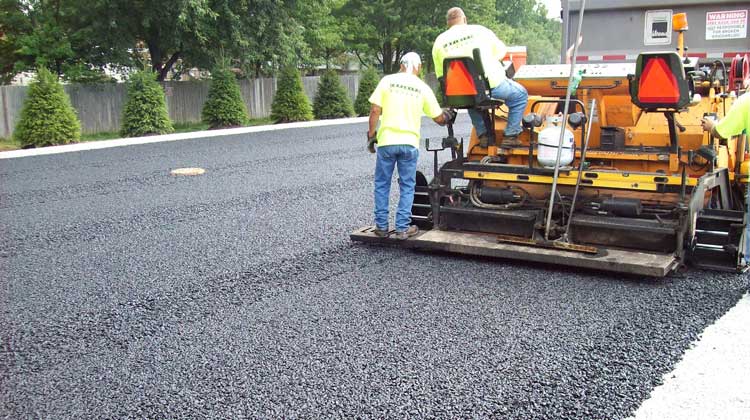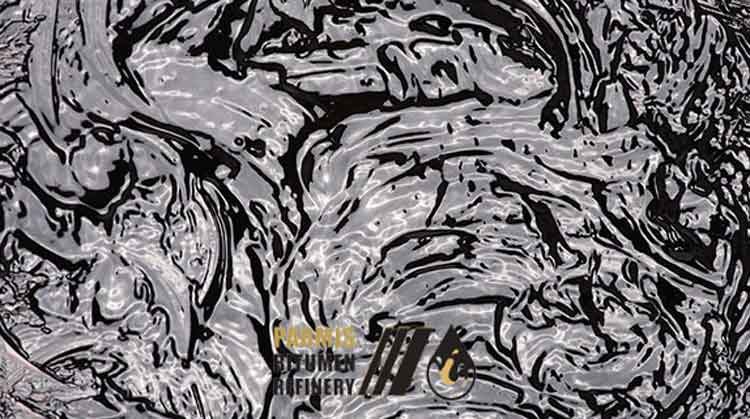Why does asphalt pavement develop cracks or rutting even when the best aggregates are used? The issue often lies in the type of bitumen applied. Did you know that two bitumen with nearly identical appearance can perform entirely differently in the field? In this Parmis article, we explore how Performance Grade (PG) bitumen addresses many road construction challenges and why it is considered a reliable substitute for conventional bitumen in critical projects.
What Is Performance Grade (PG) Bitumen and How Does It Differ From Conventional Bitumen?
Performance Grade (PG) bitumen is a modified bitumen classified based on its actual performance under varying climatic and traffic conditions. Unlike conventional bitumen, which is categorized by penetration or viscosity tests, PG grading reflects how the bitumen behaves at both high and low pavement service temperatures. It measures resistance against permanent deformation, thermal cracking, and oxidation.
For example, a PG 64-22 bitumen is designed to perform optimally at a maximum pavement temperature of 64°C and a minimum of –22°C, making it adaptable to different climatic zones. Conventional bitumen, however, is typically evaluated only by penetration depth, softening point, or viscosity tests—factors that do not fully simulate field performance.
Technical Definition of PG Bitumen in Road Engineering
In road construction, PG bitumen are evaluated under the Superpave system, which directly relates bitumen selection to pavement surface temperatures. This system ensures a more accurate and reliable match between bitumen properties and real-world conditions, reducing premature failures in highways, airports, and urban pavements.
Comparing the Rheological and Physical Properties
bitumen PG are often polymer-modified using SBS (Styrene-Butadiene-Styrene) or APP (Atactic Polypropylene). They undergo advanced rheological testing such as DSR (Dynamic Shear Rheometer) and BBR (Bending Beam Rheometer) to assess elasticity, stiffness, and creep compliance. These tests ensure greater resistance to rutting at high temperatures and flexibility at low temperatures.
Conventional bitumen, in contrast, has a simpler structure and is evaluated through basic tests like penetration, softening point, or viscosity. These methods provide limited insight into long-term pavement performance.
Thermal Resistance, Flexibility, and Durability
PG bitumen maintain elasticity at sub-zero temperatures and resist flow at high service temperatures. Polymer modification enhances fatigue resistance, lowers thermal cracking potential, and delays oxidative aging, leading to longer-lasting pavements with reduced maintenance needs.
Conventional bitumen, however, become brittle under freezing conditions, causing thermal cracking, and soften under heat and heavy loads, leading to rutting and permanent deformation.
Advantages and Limitations of PG Bitumen Compared to Traditional bitumen
While PG bitumen are costlier at the procurement stage, they deliver significant savings in the long term by reducing rehabilitation cycles and extending pavement service life.
Advantages:
- Extended pavement durability
- Higher resistance to rutting and thermal cracking
- Reduced maintenance costs
- Reliable performance under extreme climates
- Compatibility with RAP (Reclaimed Asphalt Pavement)
- Superior resistance to oxidation and fatigue
- Optimal choice for high-traffic corridors and airports
Limitations:
- Higher initial cost than penetration-grade bitumen
- Limited availability in some regions
- Requires specialized storage, transport, and application equipment
- Demands trained operators for optimal performance
| related link: What Is Performance Grade (PG) Bitumen and Its Applications? |

Production Process of PG Bitumen vs. Conventional Grades
PG Bitumen Production:
- Atmospheric and vacuum distillation of crude oil to extract heavy residues
- Polymer/additive modification of base bitumen
- Advanced rheological testing (DSR, BBR)
- Classification under PG grading system based on test outcomes
Conventional Bitumen Production:
- Mainly produced through air-blowing of heavy residues
- Evaluated using penetration and softening point tests only
Role of Polymers and Additives
Polymers such as SBS and APP enhance elasticity, toughness, and thermal stability. Additives like sulfur or antioxidants improve oxidation resistance and overall durability. These enhancements make PG bitumen a superior choice for high-performance pavements.
Smart Selection for 2025 Projects: PG vs. Conventional Bitumen
Choosing the right bitumen for upcoming projects requires a balance between climate, traffic load, and budget:
- PG bitumen are best suited for high-traffic highways, airports, and extreme climates.
- Conventional bitumen may still be used in low-budget or low-traffic projects but pose higher long-term risks.
Conclusion
Performance Grade (PG) bitumen represents an advanced solution for durable, climate-resistant, and traffic-adaptive pavements. Its structural differences, production process, and performance evaluation methods make it the global standard for modern road engineering. Selecting the right bitumen is a critical decision—one that directly impacts pavement safety, lifecycle costs, and project reliability.
FAQs
1. For what projects is PG bitumen most suitable?
PG bitumen are recommended for highways, airports, mountainous regions, and extreme climates due to their superior durability.
2. What is the main advantage of PG bitumen compared to conventional grades?
Their enhanced resistance to rutting, cracking, and aging significantly increases asphalt lifespan.
3. How does polymer-modified PG bitumen differ from unmodified bitumen?
Polymers improve elasticity, adhesion, and thermal stability, ensuring better performance in both hot and cold environments.
4. Why is conventional bitumen still used in some projects?
Lower upfront cost and simpler handling make it attractive for contractors with limited resources or equipment.
5. What factors affect the cost of PG bitumen?
Type of modifier, PG grade level, production technology, and logistics (transport & packaging) all influence the final bitumen price.


